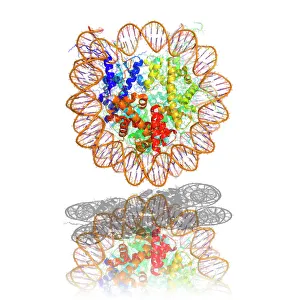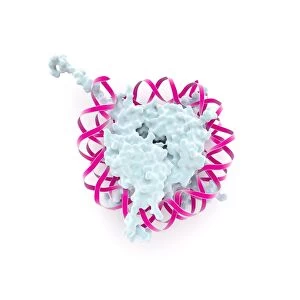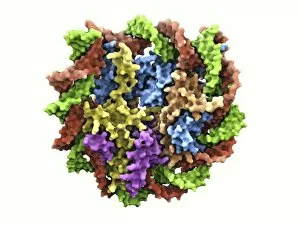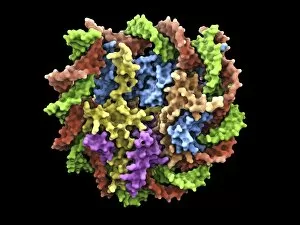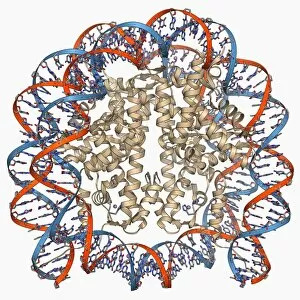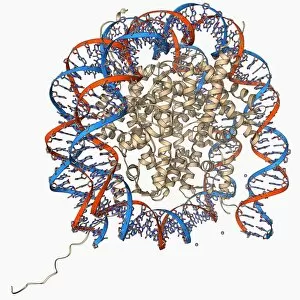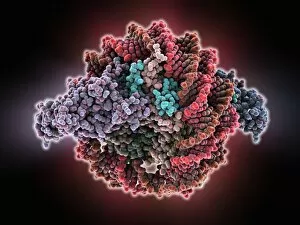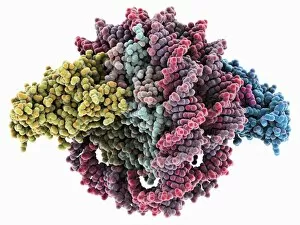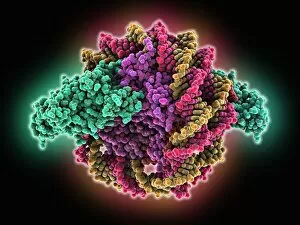Nucleosome Collection
The nucleosome, a fundamental unit of DNA packaging, plays a crucial role in organizing our genetic material
All Professionally Made to Order for Quick Shipping
The nucleosome, a fundamental unit of DNA packaging, plays a crucial role in organizing our genetic material. This intricate molecule consists of DNA wrapped around histone proteins, forming a compact structure known as chromatin. The captivating molecular model of the DNA nucleosome showcases its elegant architecture and highlights the close interaction between the double helix and histones. As we delve into its intricacies, we discover that each nucleosome acts as a spool for approximately 147 base pairs of DNA, enabling efficient storage within our cells' nucleus. Through this remarkable arrangement, the nucleosome not only condenses our genome but also regulates gene expression by controlling access to specific regions of DNA. Its dynamic nature is beautifully captured in artwork F007 / 6435 and various other molecular models (F007 / 9883-9888). These representations emphasize how the nucleosome's structure can undergo modifications that impact gene activity and ultimately influence cellular processes such as development or disease progression. Understanding the complex interplay between DNA and these fascinating molecular entities opens up new avenues for scientific exploration and holds great promise for advancing our knowledge of genetics and epigenetics alike. The tetranucleosome depicted in model F006 / 9555 further illustrates how multiple nucleosomes interact to form higher-order structures essential for chromosome organization during cell division or transcriptional regulation. In essence, exploring the world of nucleosomes unravels an extraordinary tale where biology meets artistry at its finest - showcasing nature's ingenious way to safeguard our genetic blueprint while allowing it to be precisely controlled when needed most.

